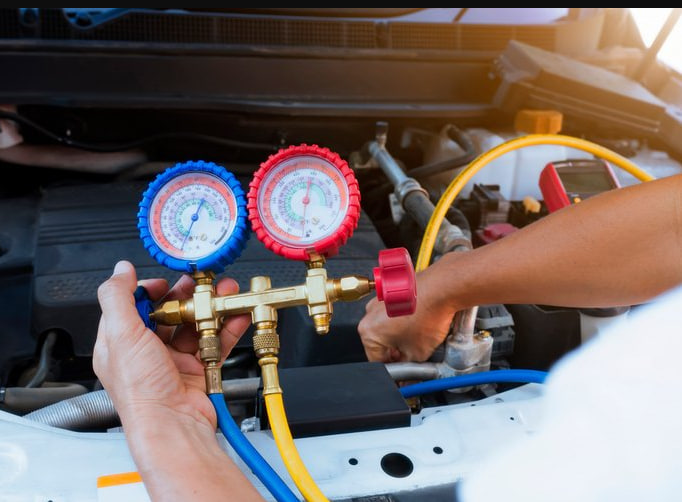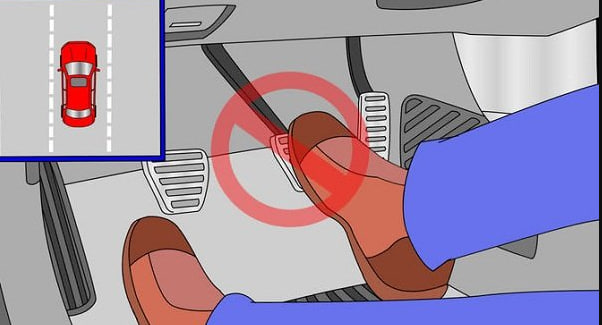Summer is here, and with it comes the scorching heat that can make even the most mundane tasks feel unbearable. One thing that can make a significant difference in your daily commute or road trip is a car air conditioner. It’s a common feature in most modern cars, but have you ever wondered how it works? Now , we’ll dive into the details of car air conditioners and explore the science behind them. So buckle up and get ready to learn something new
Toc
Components of the car air conditioning system?

The car air conditioning system is one of the most crucial components of any vehicle, especially during the hot summer months. Not only does it keep us comfortable on long drives, but it also helps to maintain the health and well-being of passengers by reducing the amount of dust, pollen, and airborne pollutants that circulate in the car. But how does this system work? we will discuss the different components of the car air conditioning system and how they work together to keep us cool and comfortable.
1. Compressor:
The compressor is the heart of the air conditioning system. It is responsible for compressing and circulating the refrigerant gas throughout the system. The compressor is usually powered by the engine’s serpentine belt and can be identified by its pulley and clutch assembly.
2. Condenser:
The condenser is located at the front of the vehicle, usually in front of the radiator. Its primary function is to remove heat from the refrigerant gas by allowing it to dissipate into the ambient air. The condenser is a heat exchanger that works similarly to a radiator, but instead of removing heat from the engine, it removes heat from the refrigerant gas.
3. Evaporator:
The evaporator is located inside the car’s cabin, usually behind the dashboard. Its primary function is to absorb heat from the cabin air by allowing the refrigerant gas to evaporate. As the refrigerant gas evaporates, it absorbs heat from the cabin air and cools it down.
4. Expansion Valve:
The expansion valve is a small device located between the evaporator and the compressor. Its primary function is to regulate the flow of refrigerant gas into the evaporator. The expansion valve works by restricting the flow of refrigerant gas, causing it to expand rapidly and cool down.
5. Receiver/Dryer:
The receiver/dryer is a small canister located between the expansion valve and the compressor. Its primary function is to filter and dry the refrigerant gas. The receiver/dryer contains a desiccant that absorbs any moisture that may be present in the refrigerant gas.
6. Refrigerant:
The refrigerant is a special gas that circulates throughout the air conditioning system. It has the unique ability to absorb and release heat as it changes from a liquid to a gas and back to a liquid. The most commonly used refrigerant in car air conditioning systems is R-134a.
All of these components work together to create a closed-loop system that circulates refrigerant gas throughout the car’s cabin. As the refrigerant gas absorbs heat from the cabin air, it is circulated to the condenser, where it gives off heat to the outside air. The cooled and dried refrigerant gas is then circulated back to the evaporator, where it absorbs more heat from the cabin air, and the cycle starts again.
1. https://suvwars.com/archive/158/
2. https://suvwars.com/archive/429/
3. https://suvwars.com/archive/67/
In conclusion, the car air conditioning system is a complex system that relies on several different components to keep us cool and comfortable during hot summer months. Without any one of these components, the system would not function properly, and we would be left sweltering in the heat. So the next time you turn on your car’s air conditioning, take a moment to appreciate the intricate system that makes it all possible.
What is the working principle of the car air conditioning system?

The car air conditioning system consists of several components that work together to provide cool air to the cabin. These components include the compressor, condenser, evaporator, expansion valve, and refrigerant. Let’s take a closer look at each of these components.
The compressor is the heart of the air conditioning system. It is responsible for compressing the refrigerant gas and circulating it through the system. When you turn on your car’s air conditioning system, the compressor starts working and compresses the refrigerant gas into a high-pressure state.
The high-pressure refrigerant gas then flows through the condenser, which is located in front of the car’s radiator. The condenser takes the hot refrigerant gas and cools it down by passing it through a series of fins that help dissipate the heat. As the refrigerant gas cools down, it condenses into a liquid state.
The liquid refrigerant then passes through the expansion valve, which regulates the flow of refrigerant through the system. The expansion valve reduces the pressure and temperature of the refrigerant, allowing it to expand into a gas state as it enters the evaporator.
The evaporator is located inside the car’s dashboard and is responsible for removing heat and moisture from the air inside the cabin. As the warm air from the cabin passes over the evaporator, the cold refrigerant absorbs the heat, cooling down the air. The moisture in the air also condenses on the surface of the evaporator, which is drained outside the car.
The cool air is then circulated back into the cabin through the car’s vents. The process repeats itself until the desired temperature is achieved.
The refrigerant plays an important role in the air conditioning system. It absorbs and releases heat as it cycles through the different components. The most commonly used refrigerant in car air conditioning systems today is R-134a, which is environmentally friendly and does not harm the ozone layer.
In conclusion, the car air conditioning system is a complex system that relies on several components working together to provide cool air to the cabin. Understanding how the system works can help you troubleshoot any issues you may encounter and ensure that your air conditioning system is functioning properly.
What are the operating conditions of the compressor?

1. https://suvwars.com/archive/486/
2. https://suvwars.com/archive/434/
3. https://suvwars.com/archive/158/
Compressors are widely used in various industries like oil and gas, manufacturing, and automotive. They are an essential component of refrigeration, air conditioning, and gas compression systems. But do you know what the operating conditions of a compressor are? In this article, we will discuss the different factors that affect compressor performance and efficiency.Temperature
Temperature plays a significant role in the performance of a compressor. Most compressors have a specific temperature range for effective operation. If the temperature goes beyond this range, the compressor can malfunction or fail. High temperatures can cause overheating of the compressor, leading to damage to the internal components.
Pressure
Another critical factor that affects the operating conditions of a compressor is pressure. Compressors are designed to operate within a specific pressure range. If the pressure goes beyond this range, it can cause damage to the compressor. Likewise, if the pressure is too low, the compressor may not be able to produce the required output.
Humidity
Humidity is another factor that can affect the performance of a compressor. High humidity levels can cause moisture to accumulate in the compressor, leading to corrosion and damage to the internal components. This can significantly reduce the lifespan of the compressor and increase maintenance costs.
Oil Quality
The quality of the oil used in a compressor can also affect its operating conditions. The oil is responsible for lubricating the internal components of the compressor, reducing friction and wear. If the oil is of low quality or not changed regularly, it can lead to reduced efficiency and increased wear on the compressor.
Air Quality
The quality of the air being compressed can also affect the operating conditions of a compressor. Dust, debris, and other contaminants can accumulate in the compressor, leading to reduced efficiency and increased wear on the internal components. It is essential to ensure that the air being compressed is clean and free of any contaminants.
Maintenance
Regular maintenance is crucial to ensure that a compressor is operating under optimal conditions. Proper maintenance can help identify any potential issues before they become severe, reducing the risk of damage to the compressor. It can also help to extend the lifespan of the compressor and reduce maintenance costs.
In conclusion, various factors affect the operating conditions of a compressor, including temperature, pressure, humidity, oil quality, air quality, and maintenance. It is essential to ensure that these factors are taken into consideration to maintain the efficiency and longevity of the compressor. Regular maintenance and monitoring can help identify any potential issues and address them promptly, reducing the risk of damage and increasing the lifespan of the compressor.














